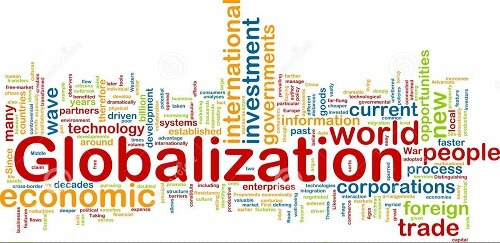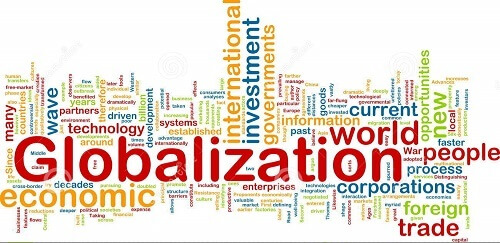Table of Contents
GLOBALISATION AND INDIAN ECONOMY CLASS 10 CBSE
DOWNLOAD MOBILE APPLICATION TO LEARN MORE: GLOBALISATION AND INDIAN ECONOMY CLASS 10 CBSE

31.What factors are kept in mind by the MNCs while setting up their production units?
Or
Explain the three conditions that determine MNCs setting up production in other countries.
Ans.Generally, MNCs set up their production units keeping the following factors in mind:
(a)Close proximity to the market.
(b)Availability of skilled and unskilled labour at low cost.
(c)Availability of other factors of production.
32.Give the benefits enjoyed by a local company in a joint production with a MNC.
Ans. The benefits enjoyed by a local company in joint collaboration with a MNC are:
(a)A MNC can provide money for additional investment like buying new machines for faster production.
(b)A MNC might bright with them the latest technology for production
(c)The local companies after setting up production jointly with MNCs, have access to international market.
33.What has been the impact of foreign brand of cars like Ford and Toyota on the Ambassador and Fiat car which dominated the market 1960 onwards?
Ans.Gone are the days when Ambassador and Fiat dominated the Indian market. Today, with globalisation, we find a large variety of foreign brands like Ford, Toyota, Hyundai, Renault, BMWs, a Chevrolet etc. flooding the Indian market. As a result, the only cars available before globalisation, Ambassador and Fiat, has lost their market to the improved and smart foreign models like Ford and Toyota.
DOWNLOAD MOBILE APPLICATION TO LEARN MORE: GLOBALISATION AND INDIAN ECONOMY CLASS 10 CBSE
34.What would happen if the government of India puts heavy tax on import of Chinese toys? Explain any three points.
Ans.
(a)If the government of India puts heavy tax on import of Chinese toys, their price will go up. They will become relatively expensive.
(b)As a result, they will lose their market in India, i.e., their demand will fall in India.
(c)Indian toys will become relatively cheaper. So their demand will increase. Hence, more profit will be earned by the Indian toy makers.
35.Explain any three advantages of globalisation.
Ans.The three advantages of globalisation are:
a.Rapid improvement in technology, especially. the development in the field of information and communication technology is an outcome of globalisation. Liberalisation of foreign trade and foreign investment policy by removing barriers on foreign trade and foreign investment, so as to facilitate easy import and export of goods, has also been due to globalisation.
(b)Globalisation and the close competition among the producers both local and foreign producers has been of advantage to the consumers, especially the well-off section in the urban areas. They have greater and better choices to make. As a result, these people today enjoy much higher standard of living than earlier.
(c)Globalisation has also created new opportunities for companies producing services, particularly those involving in Information Technology. Besides this, a number of other services like data entry and accounting are now being done cheaply in countries like India and are being exported to developed countries.
DOWNLOAD MOBILE APPLICATION TO LEARN MORE: GLOBALISATION AND INDIAN ECONOMY CLASS 10 CBSE
36.Describe the role of Multinational Corporations (MNCs) in promoting globalisation process.
Ans. Integrating the economy of a country with the economies of other countries under conditions of free flow of trade and capital and movement of across borders is called globalisation.
MNCs play an important role in promoting globalisation process in the following ways:
(a)They serve as agents for the transfer of superior technology.
(b)They have provided advanced technology, manufacturing process and improved skills to underdeveloped countries.
(c)They help in the transfer of capital from countries where it is abundant to where it is scarce. “Technology has stimulated the globalisation process.” Support the statement with examples.
(d)They help in building up knowledge base and development of human resources.
(e)They help in creating large scale employment opportunities by selling up their branches and subsidiaries.
37.Technology has stimulated the globalisation process.” Support the statement with examples.
Ans.Technology has stimulated the process of globalisation in the following ways:
(a)Transportation technology has witnessed several improvements in past fifty years. This has made much faster delivery of goods across long distances possible at lower costs, such as use of containers have led to huge reduction in port handling costs and increased the speed with which exports can reach markets.
(b)Also, the cost of air transport has fallen. Ultimately, it has stimulated the globalisation process.
(c)Telecommunication has also shown remarkable development. Computers, internet, e-mail, voice mail, etc. are used intensively to contact one another around the world.
(d)There has been a remarkable development in information and communication technology. It has enabled to access information instantly and communicate even in the remotest areas.
(e)Call centres use this to satisfy their customers abroad or provide outsourcing services from anywhere.
DOWNLOAD MOBILE APPLICATION TO LEARN MORE:GLOBALISATION AND INDIAN ECONOMY CLASS 10 CBSE
38.What is trade barrier? Why did the Indian govern ment put up trade barriers after independence? Explain.
Ans.Trade barrier refers to some restrictions imposed by the government to regulate foreign trade and to decide what kind of goods and how much of these should come into the country. The Indian government did put up trade barriers after independence because of the following reasons.
(a)It was considered necessary to protect the producers within the country from foreign competition.
(b)Industries were just coming up in the 1950’s to 1960’s so the competition from imports at this stage would not have allowed them to flourish. Imports of only essential items were allowed.
39.Have the people played an important role in the struggle for a fair globalisation? Give any instance.
Ans. Yes, people’s have played an important role in the struggle for a fair globalisation. For example,
(a)People’s organisations raised their voice against the WTO’s softness towards the trade and en investment needs of the developed countries.
(b)Massive campaign and representation have been organised by these organisations demanding fair globalisation.
(c)A demonstration was held against the WTO in gino Hong Kong in 2005 for a fair globalisation.
40.How has globalisation been advantageous to both producers as well as consumers in India? Explain.
Or
How has globalisation affected the life of Indians? Explain with examples.
Ans. Advantages of globalisation for consumers:
a.They have greater choice.
b.Better quality of products are available for consumption due to competition.
c.It has reduced the cost of goods and services considerably.
Advantages of globalisation to producers:
a.They now have access to international markets for their products.
b.They have easier access to foreign investment to enhance their production.
c.Collaboration with MNCs have added up their performance and profits.
DOWNLOAD MOBILE APPLICATION TO LEARN MORE: GLOBALISATION AND INDIAN ECONOMY CLASS 10 CBSE

